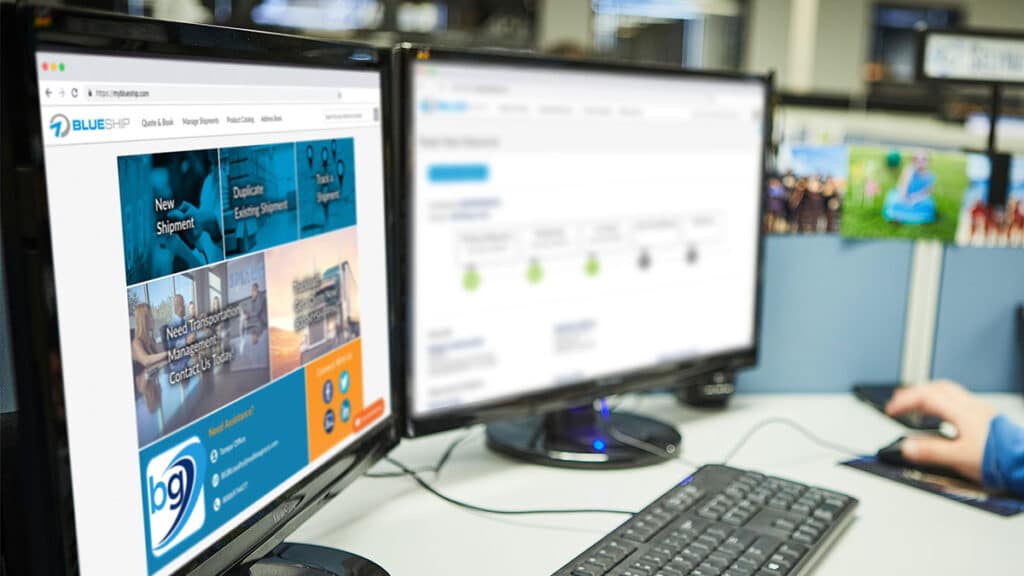
What Can You Do to Help Weather-Proof Your Supply Chain?

Bad weather can significantly slow down your operations, and unfortunately, predicting when it will strike is nearly impossible. While seasonal events like snow and hurricanes provide some predictability, it often remains a “wait and see” game. What about unpredictable events like tornadoes, nor’easters, or avalanches? These can be triggered by factors like extended cold spells, and you can’t be certain until they happen.
For most businesses, bad weather simply means staying home for the day and waiting for the weather to pass. However, trucking companies don’t have that luxury. Drivers are still expected to maintain their routes and delivery schedules, even in adverse conditions. When faced with catastrophic events like blizzards, there’s even more pressure on the trucking industry to weather-proof its schedule.
For shippers and manufacturers, weather events can wreak havoc on delivery schedules, even when they’re thousands of miles away. Severe weather events can disrupt the supply chain, leading to delays and bottlenecks, especially during rare ‘black swan’ events when trucks are rerouted for emergency relief.
So, what steps can you take to prepare your supply chain for these challenges?
Get Started with a Free Temperature-Controlled Freight Quote
Weatherproofing for Every Season
Throughout the year, whether it’s the chill of winter or the warmth of summer, the unpredictability of Mother Nature keeps us on our toes. To stay ahead, it’s crucial to plan ahead. Prepare alternate routes and parking options for those moments when regular roads are closed, and usual truck parking spots are full. Stay informed about planned road construction in advance. Make sure you always carry season-appropriate emergency gear, ready to respond to any unexpected weather challenges.
Part of building that reliable response is having access to trustworthy resources. Every truck driver and motor carrier dispatcher should maintain a list of essential phone numbers and websites for up-to-the-minute reports on local weather conditions, road closures, construction updates, and emergency notifications, especially during floods and storms. Fortunately, numerous reliable commercial websites, products, and services are available to assist in your weatherproofing preparation.
Here’s a starting guide to building your own list of resources:
- Weather: The National Weather Service operates a nationwide network of radio stations that broadcast continuous weather information from the nearest National Weather Service office. Weather radios are affordable and often powered by various sources.
- Road closures: Discover current road conditions in any state through services like Drive-Safely. For local road closures, simply dial 511 from your cell phone.
- Road construction: Keep an eye on your state’s Department of Transportation (DOT) website for updates on construction-related road closures and other potential delays.
- Emergency notifications: Visit Ready.gov for severe weather alerts and consider receiving emergency and disaster alerts on your mobile device from the website.
Always remember to pull off the road and park in a safe location before checking websites or making phone calls. Predictable responses and reliable resources will help you weather-proof your operations and navigate the ever-unpredictable world of Mother Nature.
Managing Sudden Spot Rate Hikes
When preparing for weather events, it’s crucial to consider how truckload rates can be impacted. With supply chains now functioning as a global engine, disruptions in one location can create ripples that affect others. For shippers, such disruptions can lead to unexpectedly higher shipping rates.
Here are some best practices for dealing with a sudden surge in spot rates:
Leverage a Third-Party Logistics (3PL) Provider:
Consider this option to enhance your available capacity and carrier options. Outsourcing reduces the burden of in-house work while relying on operational efficiency. 3PLs bring a holistic approach, buying power, and negotiating skills that can bolster your operations year-round.
Explore Intermodal and Multimodal Shipping:
When the first signs of a storm’s arrival become apparent, explore intermodal and multimodal shipping options. While these terms are often used interchangeably, both offer unique advantages, like flexibility, for weather-proofing and navigating post-weather event challenges.
Proactive, Cost-Saving Measures:
Increase your shipping budget by implementing proactive cost-saving measures throughout the year. Improving dock management and load planning naturally leads to budget savings. Allocate a portion of these savings for handling budget stretches caused by disasters. Furthermore, efficiency gains enhance resilience and agility, allowing your supply chain to adapt to post-disaster demands.
Securing Your HQ
While spot rates address weather events abroad, what happens when the storm is right at your doorstep? Truck diversions can slow your supply chain, but if your central operations are incapacitated, everything grinds to a halt. Establishing a robust plan is crucial, especially if your location is prone to annual weather risks.
Your first step should be ensuring the right infrastructure is in place. Does your main office have backup power contingencies? Is internet access guaranteed? Can your employees access company systems remotely? Simple measures like backup generators and remote desktops can weather-proof your operations despite external factors.
Consider your personnel too. Flexibility and cross-training ensure that every member of your team can handle a broader range of responsibilities. This becomes especially critical during crisis management situations when your top customer service team may be occupied with other essential tasks.
The more prepared your team is, the more efficient they’ll be when it truly matters. Establishing the right infrastructure is just the beginning; having a well-defined plan in place for adverse weather conditions is equally important. Moreover, your team should be well-versed in the procedures to follow during such events. The better prepared you are, the more effective your response will be when it counts.
Ready to fortify your supply chain and weather-proof it to withstand any storm? Contact us today to discuss your preparedness plan with our freight experts!
Continue Learning
How to Overcome the Blooming Complexities of Floral Logistics and the Cold Chain
How to Overcome the Blooming Complexities of Floral Logistics and the Cold Chain
View The Logistics Blog®
Embracing the Chill: How the Consumer Shift from Fresh to Frozen Effects Cold Chain Transportation
Embracing the Chill: How the Consumer Shift from Fresh to Frozen Effects Cold Chain Transportation
Read News
Four Ways Shippers Can Optimize Their Cold Storage Operations
Four Ways Shippers Can Optimize Their Cold Storage Operations
View The Logistics Blog®



